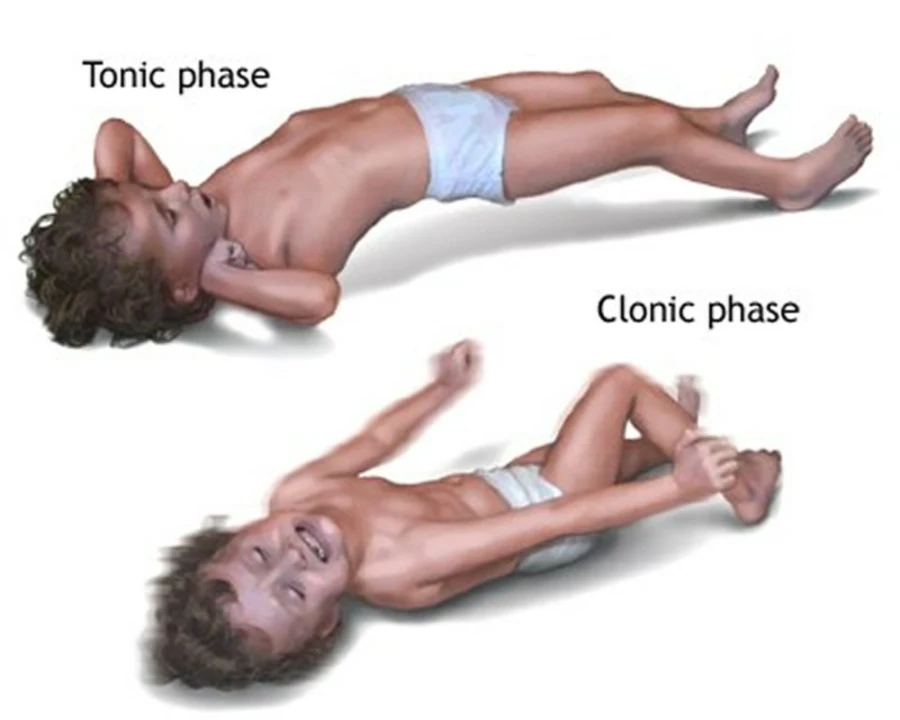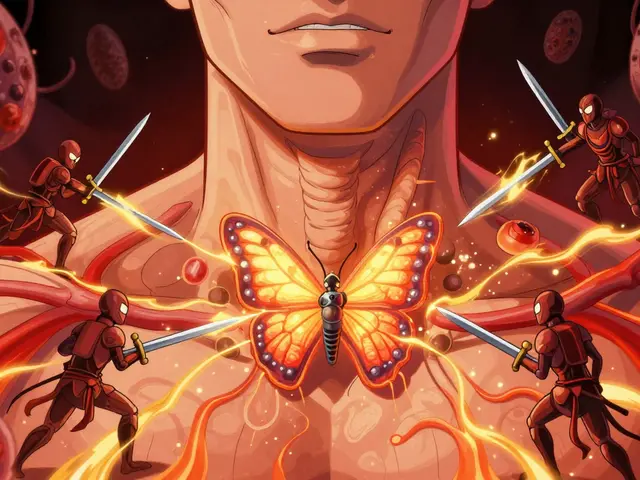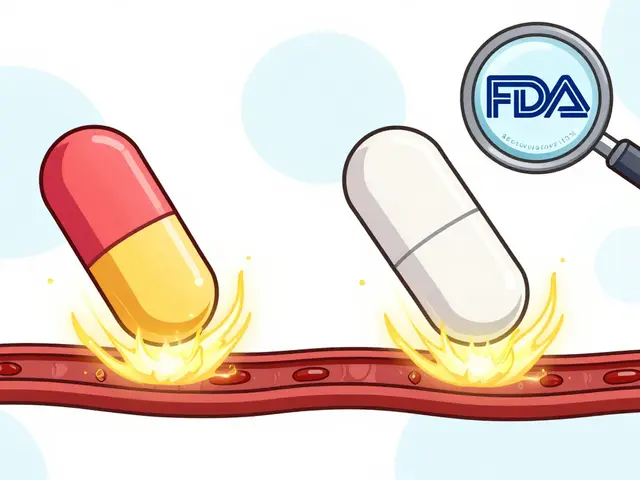
Understanding Tonic-Clonic Seizures
A tonic-clonic seizure, previously known as a grand mal seizure, is a type of generalized seizure that affects the entire brain. These seizures are characterized by a sudden loss of consciousness, followed by muscle stiffness, and then rhythmic convulsions. In this article, we will discuss the various phases of a tonic-clonic seizure to help you better understand this complex neurological event.
Phase 1: The Prodrome
Although not always present, some individuals may experience a prodrome, which is a series of subtle symptoms that can occur hours or even days before the seizure itself. These symptoms may include mood changes, irritability, headaches, or a general sense of unease. It is important to note that the prodrome is not a definitive indication that a seizure will occur, but rather a warning sign that one may be more likely to happen.
Phase 2: The Aura
Similar to the prodrome, an aura is not always experienced by everyone who has a tonic-clonic seizure. An aura is essentially a brief focal seizure that occurs just before the onset of the tonic phase. During this time, individuals may experience strange sensations, such as visual disturbances, auditory hallucinations, or déjà vu. Some people also report unusual smells or tastes. Auras can serve as a warning sign for some individuals, allowing them to prepare for the oncoming seizure.
Phase 3: The Tonic Phase
The tonic phase is the beginning of the actual seizure. During this phase, the muscles in the body suddenly contract and stiffen, causing the individual to fall to the ground if standing. The tonic phase typically lasts for a few seconds to a minute, and can be accompanied by a loud, involuntary cry as air is forced out of the lungs. Breathing may become difficult during this time, and the person's skin may begin to turn blue due to lack of oxygen.
Phase 4: The Clonic Phase
Following the tonic phase, the clonic phase begins. This is characterized by rhythmic jerking or convulsions, as the muscles rapidly contract and relax. The convulsions may start slowly and increase in intensity and frequency, before eventually slowing down and stopping altogether. This phase can last for several minutes, and during this time, the individual may lose control of their bladder or bowels. The clonic phase is usually the most recognizable and distressing part of a tonic-clonic seizure for onlookers.
Phase 5: The Postictal Phase
Once the convulsions have ceased, the postictal phase begins. This is essentially the recovery period after the seizure, during which the individual may be confused, disoriented, and extremely fatigued. Some people may experience temporary paralysis, known as Todd's paralysis, which can affect one side of the body or a specific limb. Memory loss, headache, and muscle soreness are also common during this time. The postictal phase can last anywhere from a few minutes to several hours, depending on the severity of the seizure and the individual's overall health.
Recognizing the Signs of a Tonic-Clonic Seizure
Understanding the different phases of a tonic-clonic seizure can help you recognize the signs and symptoms, allowing you to take appropriate action if you or someone around you experiences one. Some common signs of a tonic-clonic seizure include sudden muscle stiffness, falling, rhythmic jerking movements, and loss of consciousness. If you believe someone is having a seizure, it is important to stay calm and ensure their safety by cushioning their head and turning them on their side to prevent choking.
Seeking Medical Attention
If you or someone you know experiences a tonic-clonic seizure for the first time, it is crucial to seek medical attention immediately. A thorough medical evaluation can help determine the cause of the seizure and guide appropriate treatment options. Even if you have a known seizure disorder, it is important to inform your healthcare provider of any changes in seizure frequency, intensity, or duration, as this may indicate a need for adjustments in your treatment plan.
Living with Tonic-Clonic Seizures
Although tonic-clonic seizures can be frightening and disruptive, many individuals with seizure disorders are able to lead relatively normal lives with the help of appropriate treatments and lifestyle modifications. By understanding the different phases of a tonic-clonic seizure, you can better recognize the signs and symptoms and take appropriate action to ensure your safety and the safety of those around you.






6 Comments
Understanding the prodromal stage can be pivotal for clinicians, as subtle neurobehavioral shifts often precede the ictal onset. Dysphoria, occipital headaches, and transient irritability constitute a constellation of antecedent markers that may not be overtly recognized. While these phenomena lack diagnostic specificity, their temporal proximity to the seizure event warrants heightened vigilance. In practice, documenting such pre‑ictal cues can refine patient education and facilitate early interventions. Moreover, integrating wearable biosensors to capture autonomic fluctuations may augment our predictive capabilities. Ultimately, a nuanced appreciation of the prodrome bridges the gap between phenomenology and pathophysiology.
Stay hopeful, you’ve got this! 😊
When addressing tonic‑clonic seizures, it is essential to delineate each phase with clinical precision, as this informs both acute management and long‑term therapeutic strategies. The initial tonic phase, characterized by sudden, sustained muscle contraction, typically endures for several seconds but may extend up to a minute in some patients. During this interval, the involuntary cry, known as the "tonic scream," can be alarming to observers but serves as a physiologic marker of airway compromise. Immediately following tonic rigidity, the clonic phase commences, displaying rhythmic jerks that gradually attenuate in amplitude and frequency. The duration of clonic activity varies widely, ranging from under a minute to several minutes, and is often accompanied by autonomic disturbances such as tachycardia and hyperthermia. Post‑ictally, the patient may experience a profound state of confusion, disorientation, and somnolence, collectively termed the postictal phase, which can last from minutes to hours depending on seizure severity. Todd’s paresis, a transient focal weakness, may emerge during this recovery window and typically resolves within 24‑48 hours. Promptly positioning the individual on their side mitigates aspiration risk while the seizure self‑terminates. Concurrently, protecting the head with a cushion prevents traumatic injury without restraining the limb movements. It is advisable to monitor oxygen saturation, as hypoxemia may exacerbate neuronal injury during the ictal event. Blood glucose assessment is also prudent, given that hypoglycemia can precipitate or mimic seizure activity. In the emergency setting, the administration of benzodiazepines remains the first‑line abortive therapy for ongoing convulsions, with alternatives such as levetiracetam considered for refractory cases. Comprehensive neurological evaluation, including electroencephalography, should follow the acute episode to ascertain underlying etiology and guide antiepileptic drug selection. Patient education on seizure first aid empowers caregivers to respond effectively, reducing morbidity associated with injuries and complications. Finally, multidisciplinary follow‑up encompassing neurology, psychology, and rehabilitation services optimizes functional outcomes and quality of life for individuals living with tonic‑clonic epilepsy.
The key takeaway is that timing matters; don’t wait for the seizure to end before you act. Quickly roll the person onto their side, check their breathing, and stay on point. Any hesitation can turn a manageable event into a dangerous one.
Watching a seizure unfold can feel like observing a storm’s eye-there’s intense turbulence, then an eerie calm. It reminds us how fragile consciousness is, and how quickly the brain can shift from order to chaos. Understanding each phase helps demystify that abrupt transition.
Exactly, it’s a stark reminder of the brain’s delicate balance 🌐. Sharing this knowledge can equip more people to respond with calm confidence.